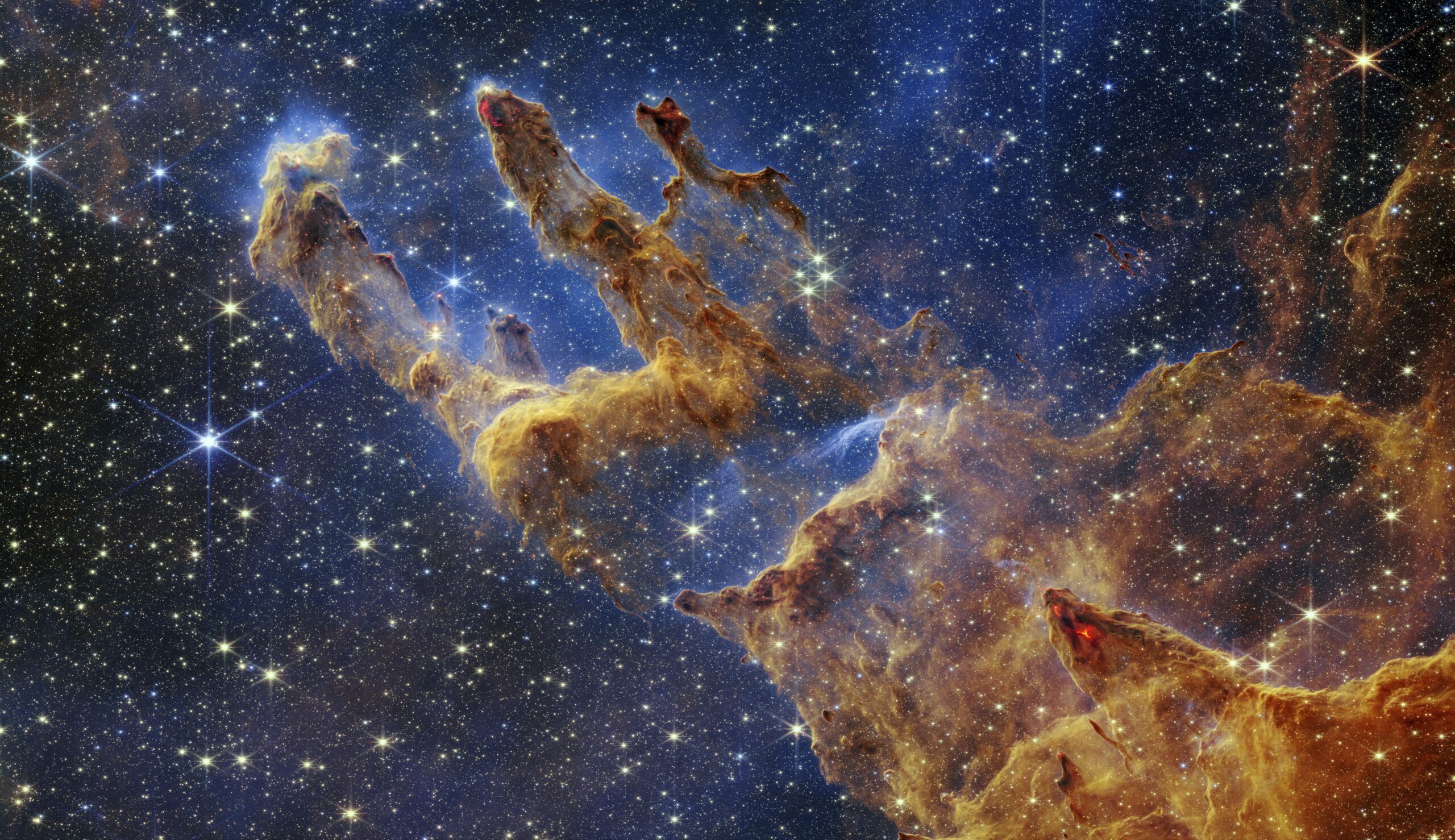The first galaxies to develop after the Big Bang will be seen by NASA’s James Webb Space Telescope, but its equipment must first get very cold. Webb’s Mid-Infrared Instrument (MIRI), a NASA-ESA collaboration, attained its ultimate operational temperature of below 7 kelvins on April 7. (minus 447 degrees Fahrenheit, or minus 266 degrees Celsius).
MIRI, like Webb’s other three instruments, began to cool under the shadow of Webb’s tennis-court-size sunshield, dipping to about 90 degrees Kelvin (minus 298 F, or minus 183 C). However, lowering the temperature to below 7 kelvins necessitated the use of a cryocooler that was driven by electricity. Last week, the team reached a particularly difficult milestone known as the “pinch point,” which occurs when the temperature of the device drops from 15 kelvins (minus 433 F, or minus 258 C) to 6.4 kelvins (minus 448 F, or minus 267 C).
“The MIRI cooler team has put a lot of effort into creating the method for the pinch point,” Analyn Schneider, MIRI project manager at NASA’s Jet Propulsion Laboratory in Southern California, stated. “Going into the crucial action, the squad was both eager and worried.” Finally, the process was executed flawlessly, and the cooler performance exceeded expectations.”Because all four of Webb’s equipment detect infrared light, which is somewhat longer than what human eyes can perceive, a low temperature is required.
Infrared light is emitted by distant galaxies, dust-encrusted stars, and planets beyond our solar system. Other heated things, such as Webb’s own electronics and optics technology, have the same effect. The infrared emissions are suppressed by cooling down the detectors of the four devices and the surrounding hardware. MIRI detects longer infrared wavelengths than the other three devices, implying that it must be cooler.
Another reason Webb’s detectors must be cold is to avoid the dark current, which is an electric current generated by the shaking of atoms inside the detectors. The dark current in the detectors imitates a real signal, creating the mistaken appearance that they have been touched by external light. Those misleading signals have the potential to drown out the true signals that astronomers are looking for. Because temperature is a measure of how rapidly the atoms in the detector vibrate, lowering it equals less vibration, and hence less dark current.
MIRI’s capacity to detect longer infrared wavelengths makes it more sensitive to dark current, requiring it to be cooler than the other sensors to completely eliminate the impact. The dark current increases by nearly a factor of ten for every degree the sensor temperature rises.
Scientists launched a series of tests after MIRI reached a chilly 6.4 kelvins to ensure the detectors were working properly. The MIRI team examines data detailing the instrument’s health, then gives it a series of orders to check whether it can do tasks properly, just as a doctor would when looking for any signs of sickness. The cryocooler was developed by Northrop Grumman, and NASA’s Goddard Space Flight Center managed the integration of MIRI and the cooler to the rest of the observatory.
Mike Ressler, the project scientist on MIRI at JPL, stated, “We spent years training for that moment, going through the commands and tests that we performed on MIRI.” “Everything we were expected to do was written down and practiced, kind of like a movie screenplay.” I was pleased to find that the test results were precise as predicted and that the instrument was in good working order when they arrived.”
Before MIRI can begin its scientific mission, the crew must overcome a number of obstacles. Team members will capture test photographs of stars and other known objects now that the device is at operational temperature, which will be used to calibrate the equipment and assess its operations and performance. These preparations will be carried out in tandem with the calibration of the other three instruments, with Webb’s first scientific photos expected to be sent this summer.
Alistair Glasse, MIRI instrument scientist at the UK Astronomy Technology Centre (ATC) in Edinburgh, Scotland, remarked, “I am very happy to be part of this group of highly driven, passionate scientists and engineers recruited from throughout Europe and the United States.” “This is our ‘trial by fire,’ but it is evident to me that the personal relationships and mutual respect that we have created over the years will get us through the next few months to provide a magnificent instrument to the global astronomy community.”
Source: VerveTimes

